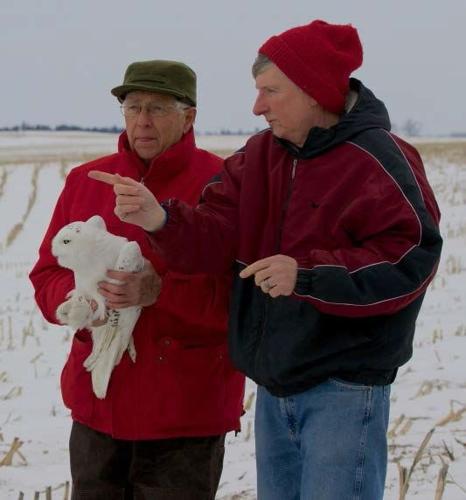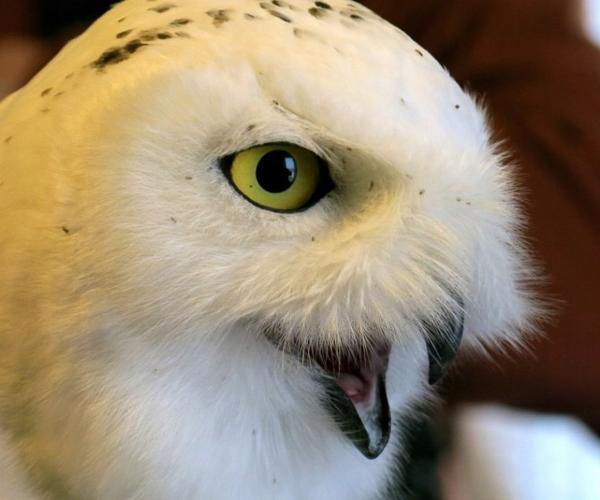Emilie Heidemann | Wisconsin State Journal
The highly contagious bird flu that has killed large swaths of poultry across the U.S. has now spread to Bayfield County, officials said Monday.
The virus was found in a backyard flock, the Wisconsin Department of Agriculture, Trade and Consumer Protection said. The birds in the flock will be euthanized to prevent the spread of the disease.
The 14 other counties that have had captive flocks become infected are Dunn, Marinette, Sauk, Pierce Fond du Lac, Oconto, Barron, Polk, Sheboygan, Columbia, Racine, Rock and Jefferson, the DATCP said. All of the birds in those 22 flocks have been euthanized.
This strain of the bird flu, called EA H5N1, is deadly to captive and domesticated birds — such as those found in farms, zoos and in people’s homes — but is not as dangerous to the wild birds that are spreading it throughout the state. Infected wild birds have been found in 15 Wisconsin counties, the DATCP said.
The continued spread of the virus could threaten captive bird populations and the egg and poultry industry, but the Centers for Disease Control and Prevention has said the virus does not currently pose a significant health risk to humans.
People are also reading…
The DATCP is encouraging flock owners to disinfect their equipment, restrict access to their birds, wash their hands frequently and separate new birds from existing flocks for at least 30 days. When possible, poultry owners should keep their birds indoors.
What to watch for
The state Department of Natural Resources asks residents to call if they see waterfowl, raptors such as eagles, or avian scavengers such as crows, ravens and gulls displaying tremors, circling movement or holding their heads in strange positions. Residents are also asked not to touch sick or dead birds.
To report birds with signs of avian flu, email [email protected] or call 608-267-0866.
The DATCP is encouraging residents with their own flocks to call (608) 224-4872 during business hours or (800) 943-0003 after hours and on weekends if they spot signs of infected birds, which include:
- Sudden death without clinical signs.
- Lack of energy or appetite.
- Decrease in egg production; soft, misshapen eggs.
- Purple discoloration of wattles, comb and legs.
- Difficulty breathing.
- Runny nose, coughing, sneezing.
- Stumbling or falling down.
- Diarrhea.
Close
Snowy owl
“Goose Pond” — or “Goose,” for short — is an adult male snowy owl, was recently relocated from the Central Wisconsin Airport near Mosinee to less-risky habitat near the Madison Audubon Society’s Goose Pond sanctuary outside Arlington.

Mark Martin, Gene Jacobs and snowy owl
Mark Martin, left, and Gene Jacobs talk strategy before releasing Goose.

Mark Martin and owl
Mark Martin releases the snowy owl Goose Pond into the wind at the UW-Madison Arlington Agricultural Research Station, a choice snowy owl habitat area just south of the Madison Audubon Society’s Goose Pond Sanctuary on Feb. 13.

Mark Martin and snowy owl
Mark Martin releases the snowy owl Goose Pond into the wind at the UW-Madison Arlington Agricultural Research Station, a choice snowy owl habitat area just south of the Madison Audubon Society’s Goose Pond Sanctuary on Feb. 13.

Mark Martin, Sue Foote-Martin
Mark Martin and Sue Foote-Martin, managers of the Madison Audubon Society’s Goose Pond sanctuary, hold Goose at the sanctuary near Arlington on Feb. 13.

Madison Audubon Society staff, Jennifer Rothe
Raptor handler Jennifer Rothe, center with owl, and Madison Audubon Society staff pose for a photo with Goose before his release. From left are Mark Martin, John Minnich, Sue Foote-Martin, Emily Meier, Rothe, Matt Reetz, Carolyn Byers and Tony Abate.

Snowy owl
“Goose Pond” — or “Goose,” for short — is an adult male snowy owl, was recently relocated from the Central Wisconsin Airport near Mosinee to less-risky habitat near the Madison Audubon Society’s Goose Pond sanctuary outside Arlington.

Mark Martin, Gene Jacobs and snowy owl
Mark Martin, left, and Gene Jacobs talk strategy before releasing Goose.

Mark Martin and owl
Mark Martin releases the snowy owl Goose Pond into the wind at the UW-Madison Arlington Agricultural Research Station, a choice snowy owl habitat area just south of the Madison Audubon Society’s Goose Pond Sanctuary on Feb. 13.

Mark Martin and snowy owl
Mark Martin releases the snowy owl Goose Pond into the wind at the UW-Madison Arlington Agricultural Research Station, a choice snowy owl habitat area just south of the Madison Audubon Society’s Goose Pond Sanctuary on Feb. 13.

Mark Martin, Sue Foote-Martin
Mark Martin and Sue Foote-Martin, managers of the Madison Audubon Society’s Goose Pond sanctuary, hold Goose at the sanctuary near Arlington on Feb. 13.

Madison Audubon Society staff, Jennifer Rothe
Raptor handler Jennifer Rothe, center with owl, and Madison Audubon Society staff pose for a photo with Goose before his release. From left are Mark Martin, John Minnich, Sue Foote-Martin, Emily Meier, Rothe, Matt Reetz, Carolyn Byers and Tony Abate.
Subscribe to our Daily Headlines newsletter.
[ad_2]
Originally Appeared Here